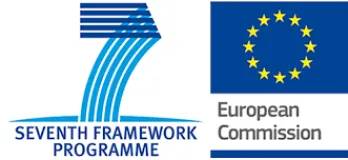BEST PATHS
Relevant project information
Dates
Project website
Role of CIRCE
Grant agreement number
Funded by

Description and objectives
A group of eight grid managers with a generating company, manufacturers and research organizations, proposes 5 demonstration projects to remove, over 4 years, several barriers that prevent the large-scale penetration of renewable electricity production into the electricity transmission grid. The industry-led large-scale demonstrations aim to:
- A scaled-down model of generators connected to an HVDC link is used within a new test facility to validate new control strategies to improve the interaction between HVDC links and wind turbines.
- The implementation of a full-scale, hardware-in-the-loop test setup in collaboration with worldwide market leaders in HVDCVSC technology explores the interactions of multi-terminal HVDC VSC control systems to validate their interoperable operations.
- Strategies to improve existing HVDC interconnections are validated with the help of innovative components, architecture and system integration performances, to ensure higher RES penetration and more efficient cross-border exchanges.
- Scale experiments and full-scale pilot projects of installation and operation of AC overhead line repowering technologies are conducted to show how existing corridors can see their existing capacity increase within affordable investments.
- The technical feasibility of integrating DC Superconducting links within an AC meshed network (using MgB2 as the critical material) will be tested at prototype scale, demonstrating that significant performance improvements have been achieved to enable commercialization before 2030.
Value proposition
- Demonstrate the ability of wind farms to circumvent adverse interactions between off shore wind generators and HVDC networks in charge of carrying shore power (using numerical simulations and a downscaled laboratory model of generators connected to an HVDC link).
- Validate that multiple HVDC terminal / multivendor networks can rely on interoperable VSC terminals by 2020.
- Validate the rehabilitation of an existing multi-terminal HVDC interconnection using innovative components, architecture and system representations, to achieve higher penetration of RES and cross-border exchanges
- Demonstrate the role and impact of various innovative system approaches for the continuous repowering of existing AC transmission corridors
- Validate to prototype at scale, the technical feasibility of integrating DC, superconducting links within an AC grid mesh
- Widely disseminate the results obtained for an early implementation of the scaling and replication rules to interested parties.
In this project, CIRCE will be the leader of the horizontal activity of evaluating, from an economic and technical point of view, the feasibility and reliability of the developed solutions. CIRCE will be leading this project together with 23 entities performing the following specific activities:
- Use of benchmark in case definition and KPIs benchmark measurements.
- Improved scaling potential of innovative network solutions.
- Replication potential of innovative network solutions.
- Prediction of network performance through numerical tools.
- Expansion of technical and economic standards and evaluation in the demonstration control environment.
- Cost-benefit analysis of demonstrated transmission system innovations.
- Barriers to replication and replication potential of solutions.
- Analysis of the overall impact of demonstrations.


